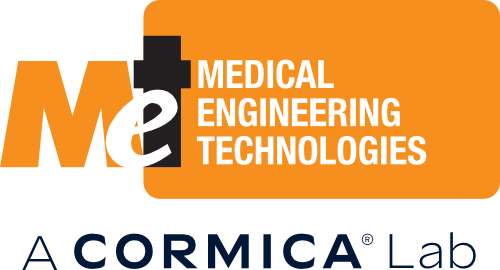Our vascular device testing services encompass a broad range of equipment and expertise for Proof of Principal (POP) testing and design verification to ISO standards and/or special programs. We can test devices such as endovascular products, interventional devices and all manner of implants, delivery systems, balloons and guide wires.
Test benches, unique in Europe, allow measurements to be made in wide variety of vascular tree configurations. We offer standard layouts, but can equally accommodate custom requirements for simple or tortuous paths. Tests are temperature-controlled, 3 dimensional and have movement and force sensors positioned as required. Low-friction drive systems permit repeatable conditions for multiple tests.
Blood flow studies form an important component of stent and vascular graft assessment. Our flow dynamics experts have developed pulsatile flow test benches, in order to simulate physiological conditions of compliance, resistance, anatomy and much more. We can simulate healthy patients and a wide variety of pathologies.
Standards MET test to:
- ISO 5840 - Cardiovascular implants - Cardiac valve prostheses
- ISO 7198 - Cardiovascular implants - Tubular vascular prostheses
- ISO 10555 - Sterile, single-use intravascular catheters
- EN 12006 - Non-active surgical implants - Part 1 cardiac valve prostheses and Part 3 endovascular devices
- ISO 14630 - Non-active surgical implants
- ISO 25539 - Cardiovascular implants - endovascular devices
- ASTM F2394 - Standard guide for measuring securement of balloon expandable stent on a delivery system
Examples of tests included in these standards:
- Flexibility ease of advancing a device tip around difficult anatomy.
- Dislodgement force measurement of the force required to displace deployed stents.
- Insertion force required to advance and retract a product through a sheath.
- Push force delivered at the distal tip of a device.
- Rotational response measurement of the degree of rotation transmitted from one end of the catheter to the other.
- Torque response measurement of the torque transmitted from one end of the catheter to the other.
- Track force required to advance a catheter, independently of operator technique.
- Withdraw force required to remove a catheter, independently of operator technique.
- Tortional bond strength.
- Conformability to vessel wall.
- Acute coating integrity etc...
- Stent testing.
- Verification of delivery, deployment, retention and durability. We can address all the pathologies and locations in which stents are used: coronary, peripheral, urinary, vascular, etc... and provide comprehensive performance data.
Fatigue Testing
False positives have been a problem in stent fatigue testing. MET's specifically developed test benches provide a challenge which is independent of the vessel wall material properties.
Flow Dynamics
We use a variety of techniques for analysing flow through stents, including Particle Velocity Imaging (PVI). This equipment can be used to develop vascular stent designs that limit micro embolism formation.
Radial Outward Force Measurement
The pressure delivered to a vessel wall can be measured statically or dynamically over a wide range of sizes and test parameters.
Retention Force Measurement
Stent delivery systems must deploy their cargo at the desired location. MET provides comprehensive testing to ASTM F2394 - Standard guide for measuring securement of balloon expandable vascular stent mounted on delivery system, which governs the assessment of the security of a stent on its balloon to ensure safe delivery.
There are two main methods of testing stent retention forces. The shim method is described in the ASTM standard; it requires pre-conditioning and measures proximal and distal forces against displacement. A second method, the tape method, is particularly good at measuring stent retention when crossing lesions. Proprietary methods have been developed to implement this test.
Heart Valve Testing
Heart valve testing has been developed into a speciality by our partner Protomed. A wide range of in-vitro and in-vivo tests are supported by expert knowledge acquired in the field and many years spent developing simulation equipment, allowing valves to be assessed under normal conditions and a variety of pathologies. Studies include: deployment, fixation, functional, fatigue, steady flow, dynamic flow, and much more.
This totally unique test bench can simulate normal anatomies and vasculatures with medical problems. Pressures, resistances and compliance can all be adjusted to thoroughly interrogate the performance of heart valves. Stroke volume can be set between 30ml and 100ml and flow rate between 2 and 7 Lpm. The systolic/diastolic ratio can also be selected. Peak and mean pressure can be tuned as required. The heart rate range is 30 to 120bpm.
Valve movements can be visualised and recorded throughout the cycle and Particle Image Velocimetry (PIV) gives detailed analysis of flow dynamics.
Physical test systems are supported by computer modelling (FEA) and in-vivo studies. These services can be combined in our integrated product design platform.
